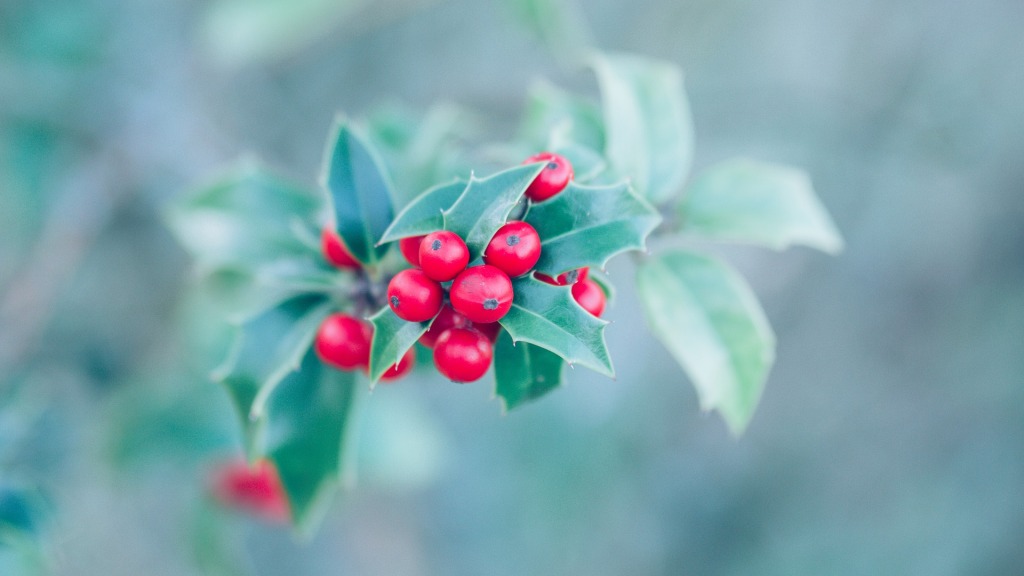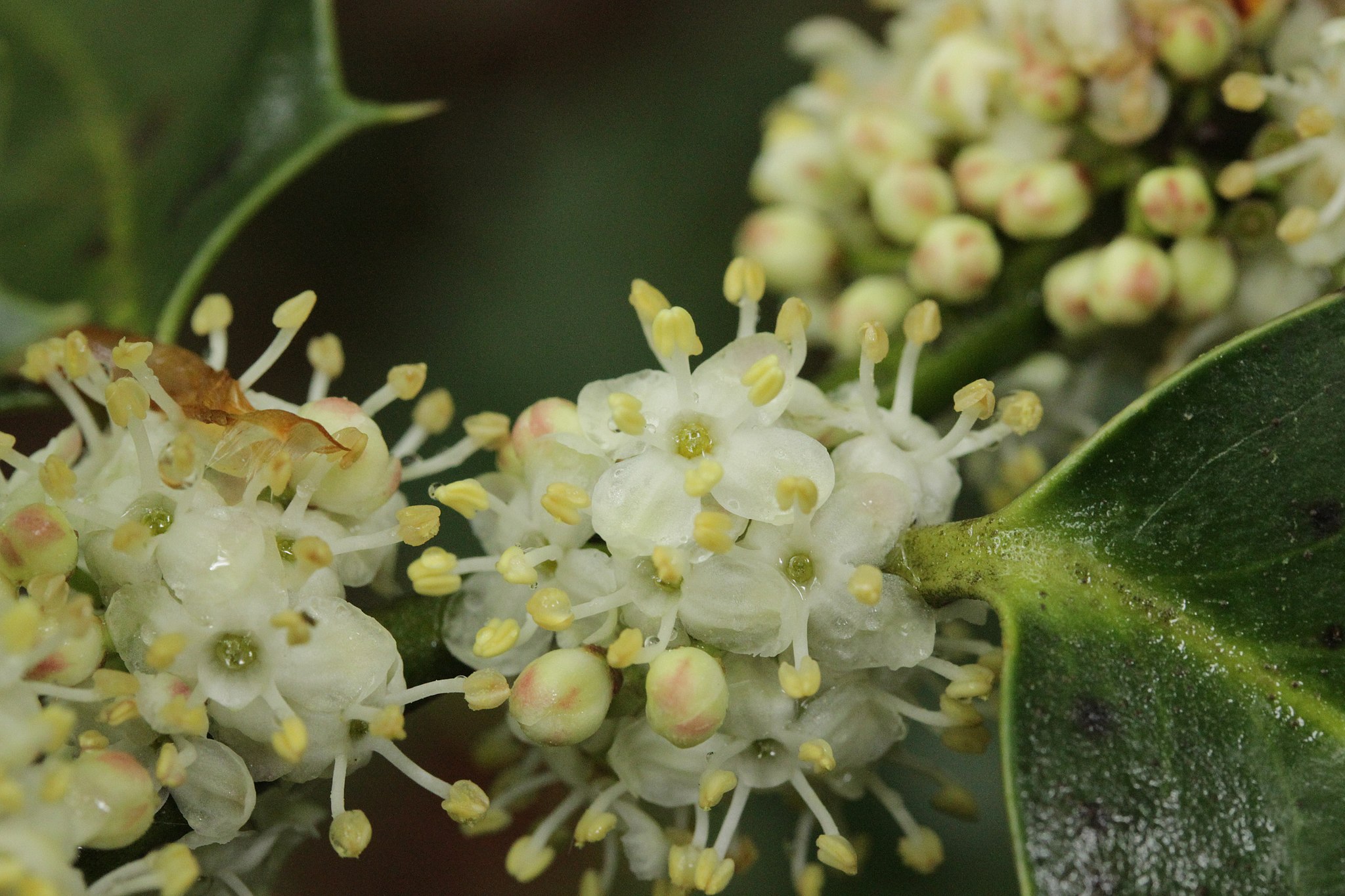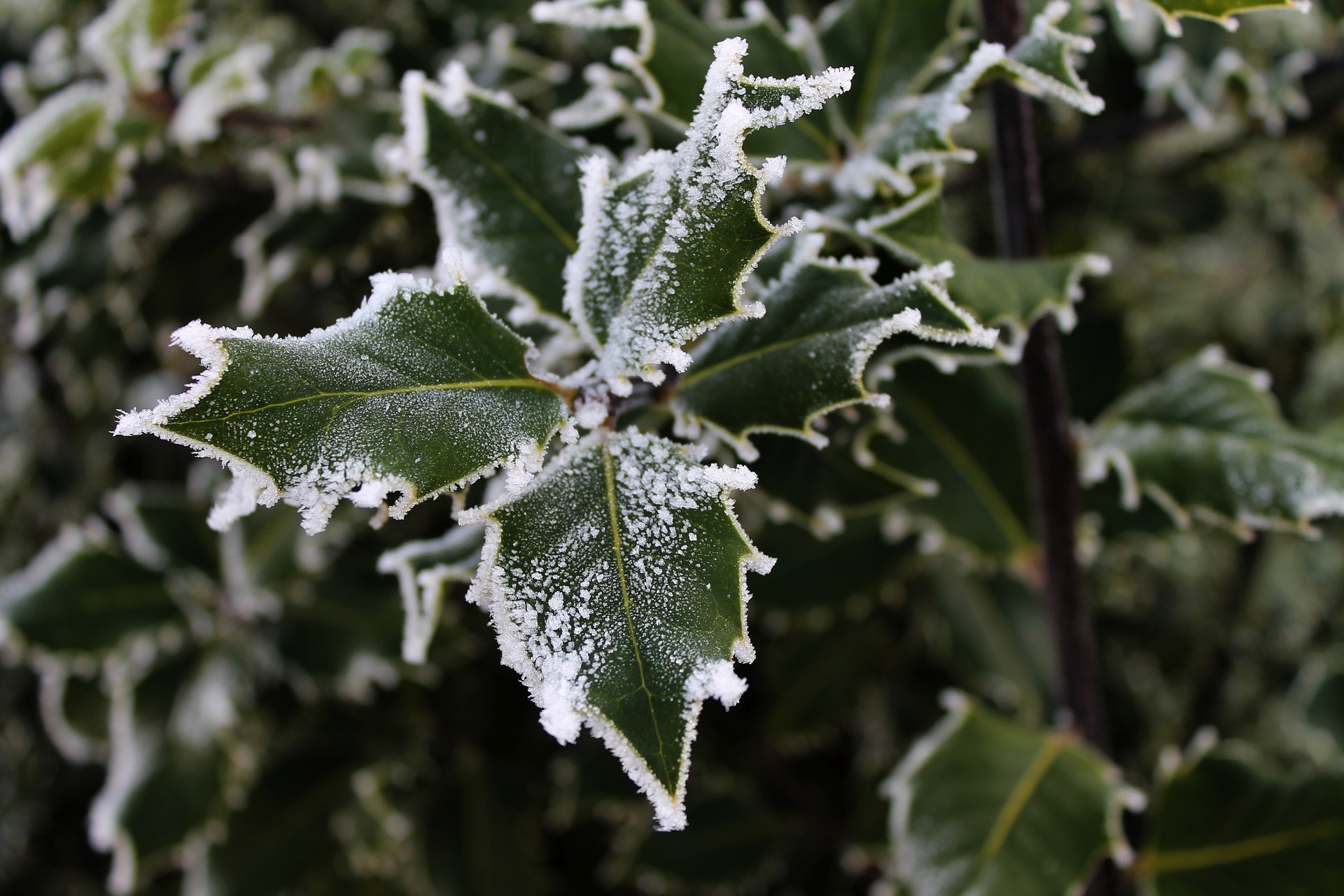
On your birthday it’s not uncommon to receive a present featuring your birthstone or zodiac symbol. However, few people know about their birth flower. In this series, we’ll be looking at the birth flower of each month, according to Joseph Hammer-Pugstall’s The Language of Flowers.
December, in the Northern hemisphere, sees the longest night of the year. The winter air bites your nose while the rest of you is wrapped in layers of wool and fleece. Trees drop their leaves, birds migrate, animals hibernate and we find ourselves dragging our feet; the excitement of the festive season keeping us jolly.
It can be a hard time of year for every living thing, but there are little joys and pleasures to help us along the way. In December, one of those can be found in our wreaths, on our cards and growing down almost every country lane. Holly or Ilex (Ilex aquifolium) is a staple Christmas feature, making it the perfect birth flower for this month.
You may have seen the Holly I came across during my Very Berry Christmas Walk this month, on YouTube. It’s such a fabulous little plant with so much symbolism, tradition and history, so I’m excited to be able to go into more depth about it in this post. If you haven’t seen the video, I have posted it above or you can watch it by clicking this link.
Holly plants are evergreen shrubs with deep green, leathery leaves, iconically edged with three to five sharp spines. Although you don’t often see them, holly flowers are numerous, and are small and white, with 4 petals. In winter, these develop into bright red fruit. These fruits are called drupes. Perhaps the different kinds of fruit should be saved for another blog post.
The red fruit can only be found growing on female Holly plants which means this is a dioecious species; there are separate male and female plants. It’s hard to determine which plants are male and which are female until they begin flowering, as the flowers contain the sexual organs. Below is a picture of the flowers of a male Holly plant, which can be distinguished by the anthers growing from them.

The tradition of decorating your house with Holly actually predates Christmas. Romans began this tradition for the festival or Saturnalia, in honour of the god Saturn, god of wealth and prosperity, sending boughs of Holly to their friends. Christians later adopted this tradition for the celebration of Christmas.
During the medieval period, Holly really became a staple of Christmas and was known as Christ’s Thorn. The berries were said to represent the blood sacrifice of Jesus and the spikes of the leaves represent his thorny crown. In one British Christmas Carol, Holly plays a starring role with another key player, Ivy.
Although the exact date of its creation is unknown, The Holly and the Ivy is a carol dating back to the 1800s. While Holly represents Jesus, Ivy is said to represent his mother, Mary. What I love most about this carol is that although the words don’t have a conception date, the tune does. In Cecil Sharp’s 1911 collection of English Folk-Carols, he states that he heard the tune sung by “Mrs. Mary Clayton, at Chipping Campden”.

When I see those beautiful, little, red berries popping up along country lanes, I know Christmas is just around the corner. The rich green and vibrant red colours of Holly remind us of the festive period and help keep spirits high. What a perfect plant it is, then, to represent the month of December.
Thank you for reading this post! If you enjoyed it and want to support the blog, you can leave me a tip here. All the money I raise is going towards better camera equipment, so you can enjoy higher quality images and videos. To ensure you don’t miss January’s birth flower, be sure to follow Fronds with Benefits here, on Twitter, Instagram or Facebook.
Image credits:
Holly plants: Natasha Barbieri
Male Holly flowers: Björn S./CC BY-SA 2.0
Frosty Holly: Jasmin Raffaele

One response to “The birth flower of December: Holly”
I love the writing in this post! You started this series the month after my birthday so I’m patiently waiting until June rolls back around
LikeLiked by 1 person